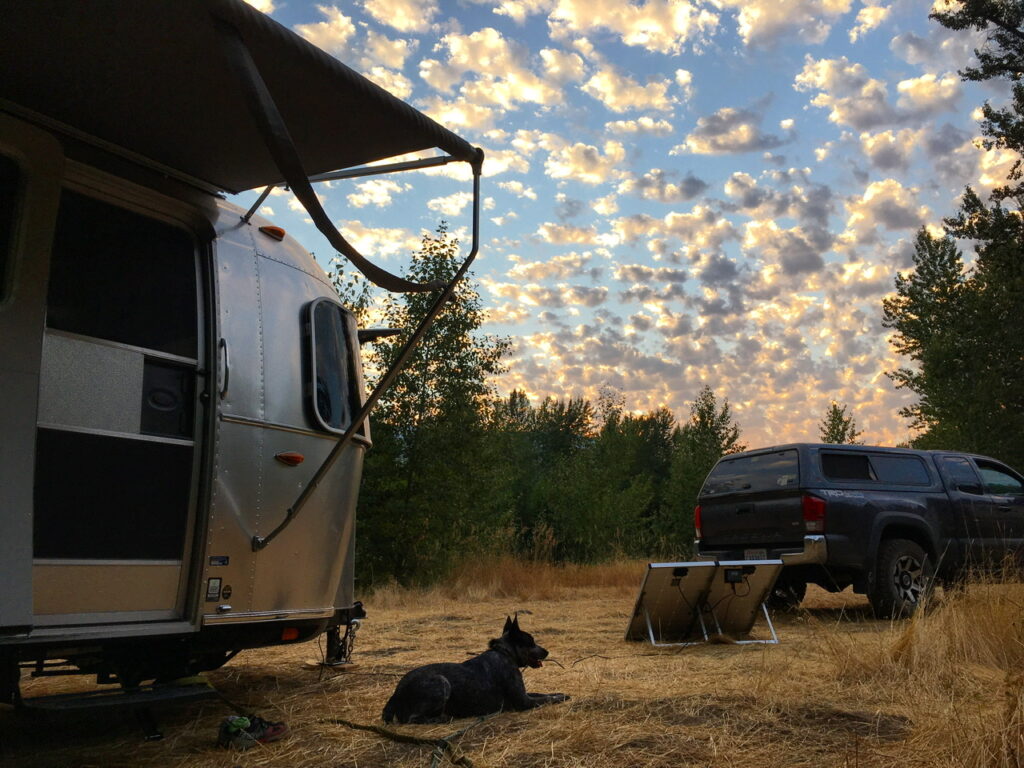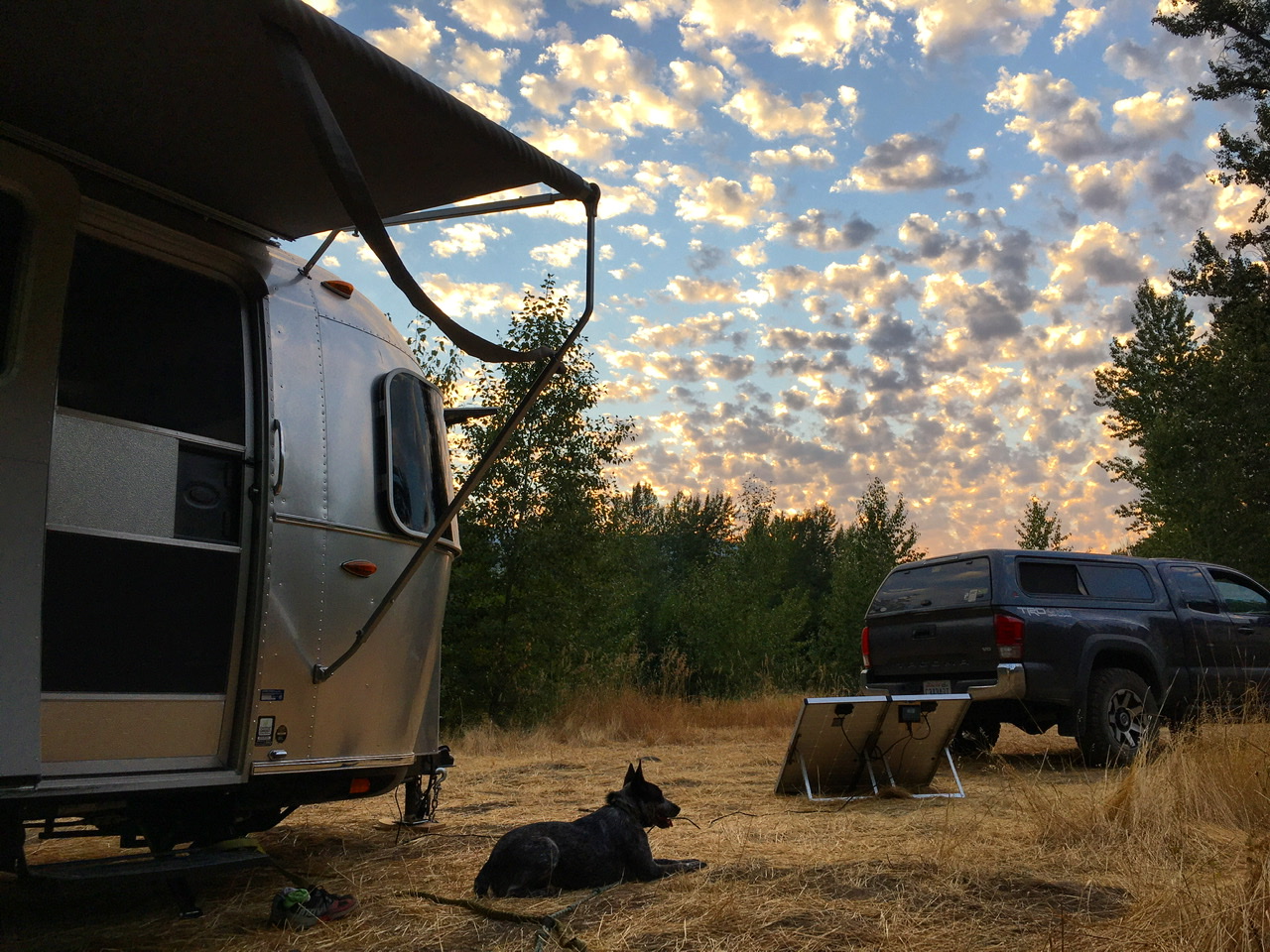When I first considered getting a 19′ Airstream and actually living in it for a while, I had no idea what to expect. I’ve spent plenty of time in small homes, taken extended road trips sleeping in my Jeep and truck, but RV living? That was new territory.
Since hitching up my Bambi on August 9, I’ve mostly been parked with full hookups in a friend’s driveway while finishing the remodel of her guesthouse. Other than a quick 3-day boondocking trip, I hadn’t gone fully off-grid.
That changed at the end of August when I jumped headfirst into solar-powered, off-grid living.
I’m still not totally sure what I was thinking, but I’ve said that about many things in life. And so far, I haven’t regretted a single one. Yet.
(Yes, I’ve been technically off-grid, powered only by solar, though I’ve had easy access to a septic dump, fresh water, and hotspot reception for my remote job. So, let’s call it “comfortably off-grid.”)
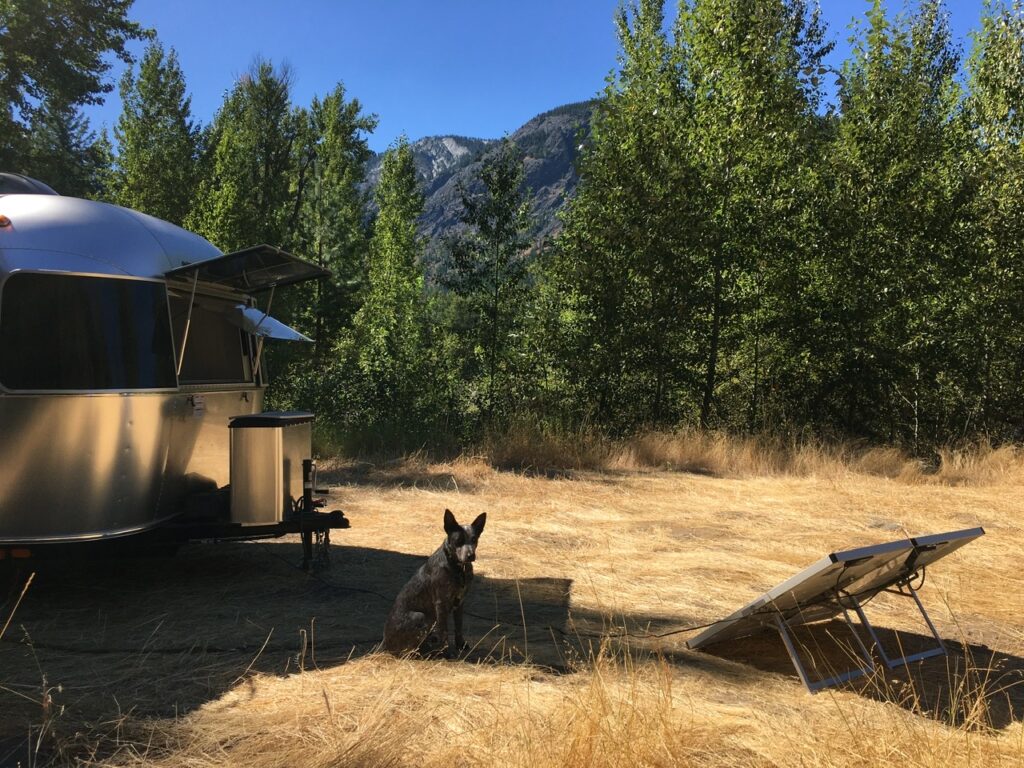
And here I am—17 days later, wrapping up my first stretch of completely solar-powered living. It’s kind of incredible.
Even better? Life is simple, relaxing, and amazing.
I had planned to keep it going longer, but today, I packed up and moved to the local state park to hook up to power. The one thing I hadn’t accounted for? Wildfire smoke. Though my solar panels were still generating power (albeit at a reduced rate), I needed to run my A/C to get some clean air while waiting for the smoke to clear.
Over the last few weeks, many people have asked about my solar setup, so here’s a breakdown of what I bought, what I’ve learned, and how I’m making it work.
My solar power setup.
Let me start by saying this:
If you do any amount of RV solar research online, your head will explode.
I’m a great researcher, but electricity and batteries? Not my forte. Still, I’ve now learned more about voltage, watts, amperage, and solar panels than I ever thought I would. I feel like I went back to 12th grade science.
Ultimately, I ended up buying a 180-watt Zamp portable solar panel* and kept my two stock 12V Interstate marine batteries that came with my Airstream Bambi.
Yep, that’s it! I’m running stock wet batteries and a portable solar panel. Nothing crazy and nothing that expensive. Just a simple, affordable solar setup that works.
*These days, I’m not even sure that Zamp makes this panel anymore, but they do have a whole line of updated solar kits for Airstreams.
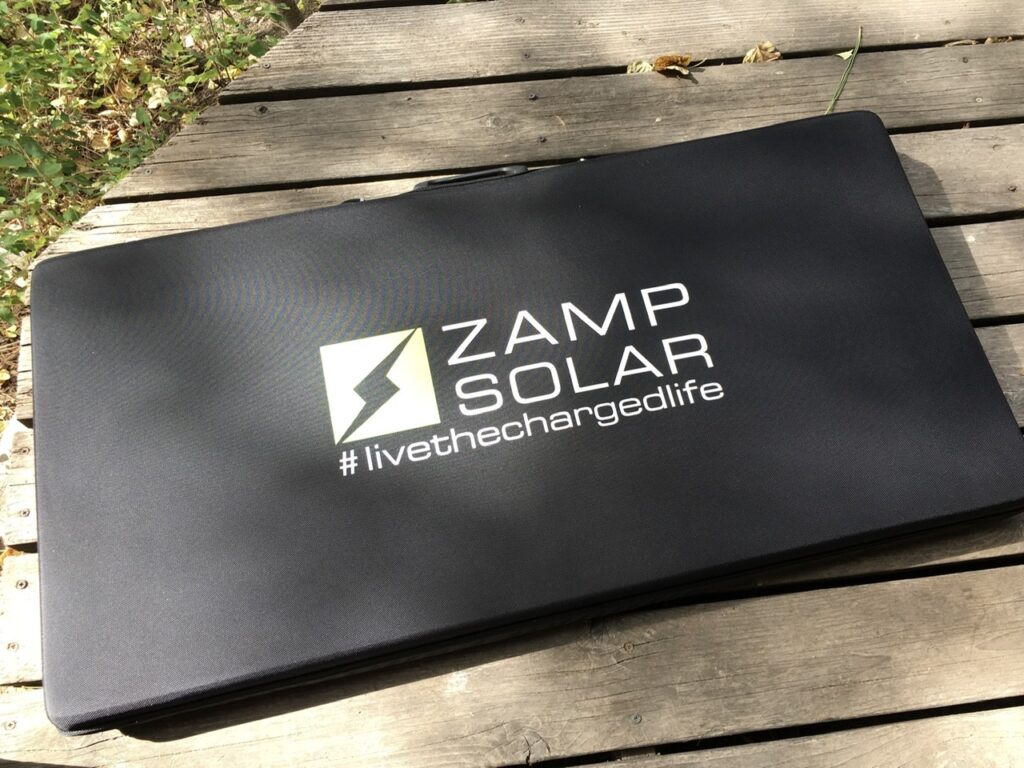
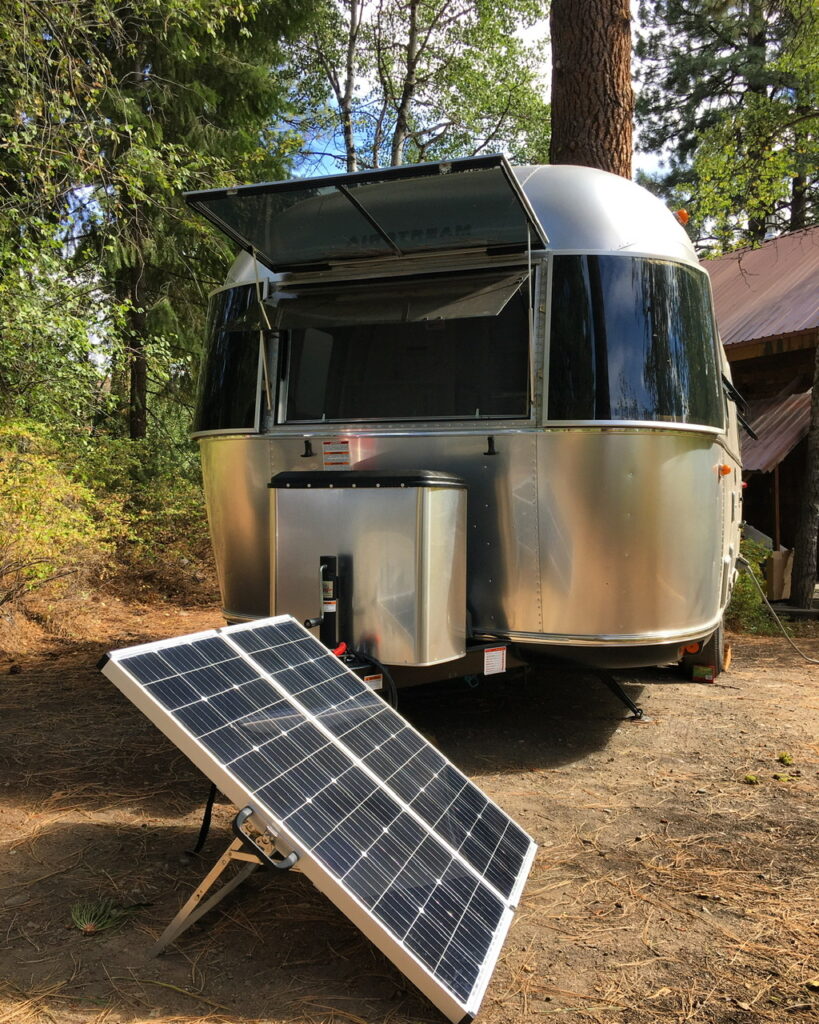
Why a portable Zamp?
I chose Zamp for a few key reasons:
1. Affordability
Airstream quoted me over $4,000 for a 200-watt solar kit with two AGM batteries and nearly $3,000 for just the roof-mounted panels.
No thanks.
I was in the middle of a land purchase and home construction project, so I couldn’t justify that kind of investment. Instead, I spent $750 on a 180-watt Zamp portable solar panel, which was a much more reasonable starting point.
2. My Airstream Is Zamp-Ready
Newer Airstreams (like mine) come pre-wired with a Zamp-ready sidewall port. That means I could plug in my panel directly—no wiring required.
Yes, I could have bought another brand and reversed the polarity, but I already had enough projects. Plug-and-play sounded good, and it was.
If you do want to geek out on wiring though, here’s an excellent article about how to wire a GoalZero panel to a ZAMP port.
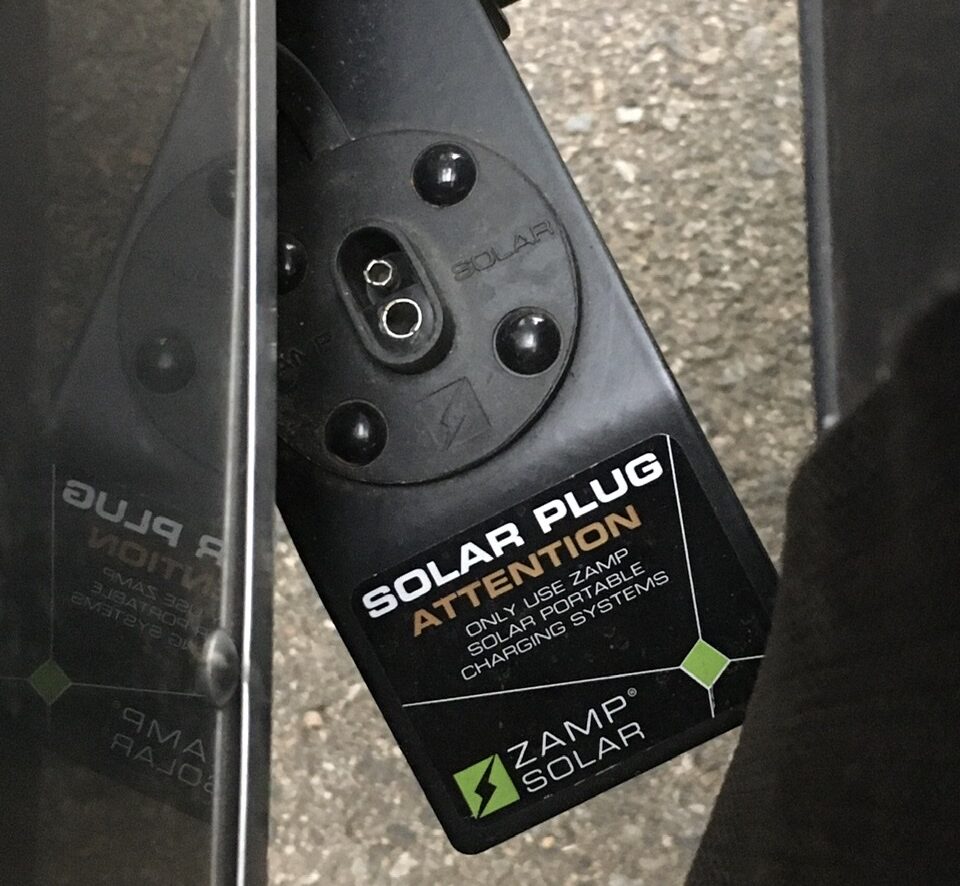
3. Portability
With a portable panel, I can park in the shade and put the panel in the sun, which is a huge advantage in a hot climate like Central Washington.
My current cord is only 15 feet long, but I plan to get an extension. Being able to move the panel around has been a game-changer.
4. Made in the PNW
Zamp is based in Bend, Oregon, and they manufacture their panels using mostly locally sourced materials with a 25-year output warranty. Buying local is a bonus!
Solar power cliff notes.
Here are some of the biggest lessons I’ve learned about solar and batteries:
Lesson 1: Solar Panels Don’t Power Your RV, they Charge Your Batteries
This was my biggest lightbulb moment.
No matter how many solar panels you buy, they don’t directly power your RV. They only recharge your batteries, which then power your RV.
Lesson 2: Your Power Is Only as Good as Your Batteries
Your batteries are the real limiting factor, not your panels.
Even with unlimited sunshine, your power is only as good as the capacity of your batteries. And no matter how much solar power you have, you’re still on battery power, which for me without an onboard inverter, means no 110V outlets, microwave, or A/C. We’ll come back to that one below.
Lesson 3: Know Your Battery Types
There are three main types of RV batteries:
- Flooded/Wet Cell – Common, cheap, but require routine checks on water levels and periodic refilling with distilled water.
- AGM – No maintenance, more robust, slightly pricier.
- Lithium – Lightweight, high performance, but more expensive. You can draw down the entire charge of the battery but charging them in a cold climate below freezing temperatures can kill them.
I’m sticking with my wet batteries until they degrade, then I’ll likely upgrade to AGM.
Lesson 4: You Can’t Use 100% of Your Battery Power
Turns out unless you buy really expensive lithium batteries, you can’t actually use 100% of your battery charge if you want your batteries to last. With both wet and AGM batteries, repeatedly discharging them more than 50% will severely compromise their life span.
A fully charged wet battery will read 12.6V or higher. One 50% discharged, the voltage will be around 12.06. Most sources I read recommend that resting voltage should never get much below 12.3V to maintain optimum battery life. Sure, you can discharge your battery deeper if needed, but you’ll be replacing it much sooner.
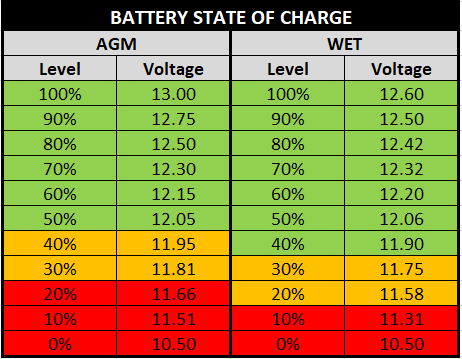
Most people say to get a “real” battery voltage meter but my Airstream has one that works reasonably well. Granted, the voltage monitor on my Zamp is far more accurate so I often keep tabs on it through the window.
How much solar power do you need?
That’s the million dollar question, right? How big of a solar panel do you need? How long can you last on solar or battery power before your battery is 50% discharged?
Everything I just talked about above is sort of critical to understanding the whole equation. And so here we go, some math! Ready?
Each of my wet batteries has around 80 amp hours of power, so I have 2 * 80 = 160 amp hours. But…. since I can only use 50% of that to maintain optimum battery life, each battery in fact has only 40 amp hours, so ultimately, 2 * 40 amp hours = 80 amp hours.
How much is 80 amp hours? Beats the hell outta me!
No way was I going to sit down and try to calculate my assumed power usage, so instead, I took myself on a long weekend trip to a local forest service road, completely off-grid, to see how long I could last before my batteries dropped to around 12.2V. I figured if my batteries died, well, it would be a quick trip!
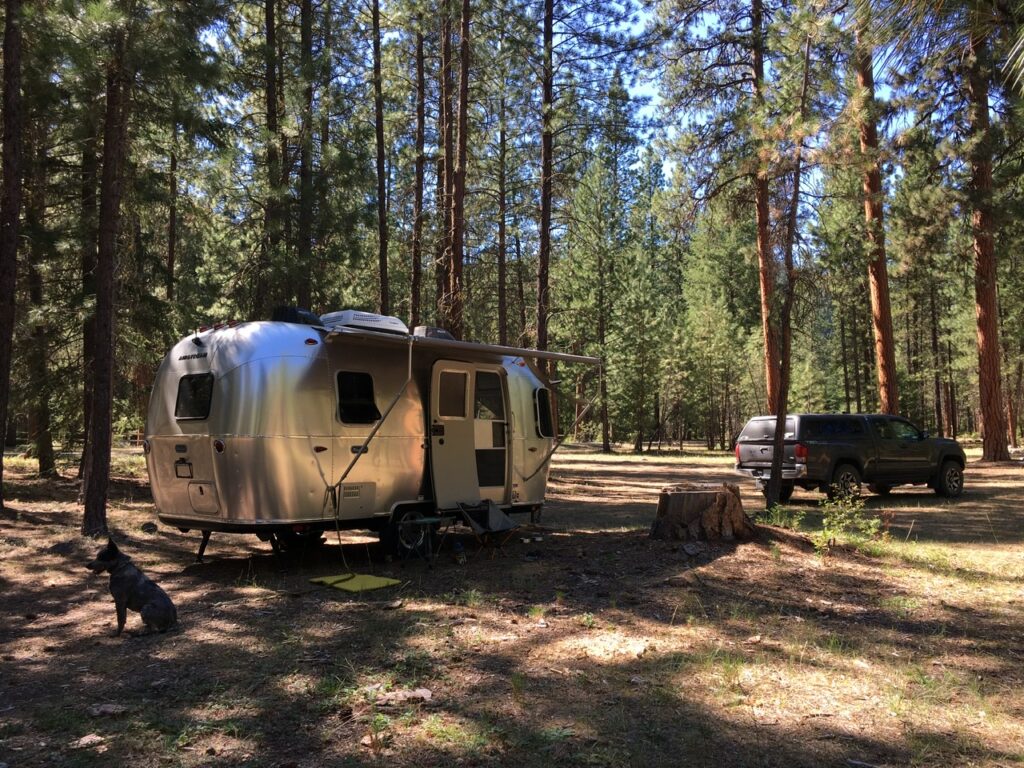
The result? I lasted 3 days!
That means I used about 80 amps of battery power in 3 days, which is roughly 25 amps of power per day. Granted, I’m a pretty low power user. During those 3 days, I ran the ceiling fans, refrigerator (sometimes turning it off at night because it was chilly already), water heater, water pump, radio, and charged my phone via onboard USB outlets. I used my solar lanterns because they’re a softer light than the bright Airstream LEDs. I’m also not a big TV watcher, so I didn’t use it at all.
I was conservative but felt comfortable.
The best way to figure out what size solar panel you need? Take yourself boondocking and see how long you last on battery power. It’s a way more fun way of calculating your energy use. And be honest. Don’t be ultra-conservative, just use what you use. It’ll inform what you really need.
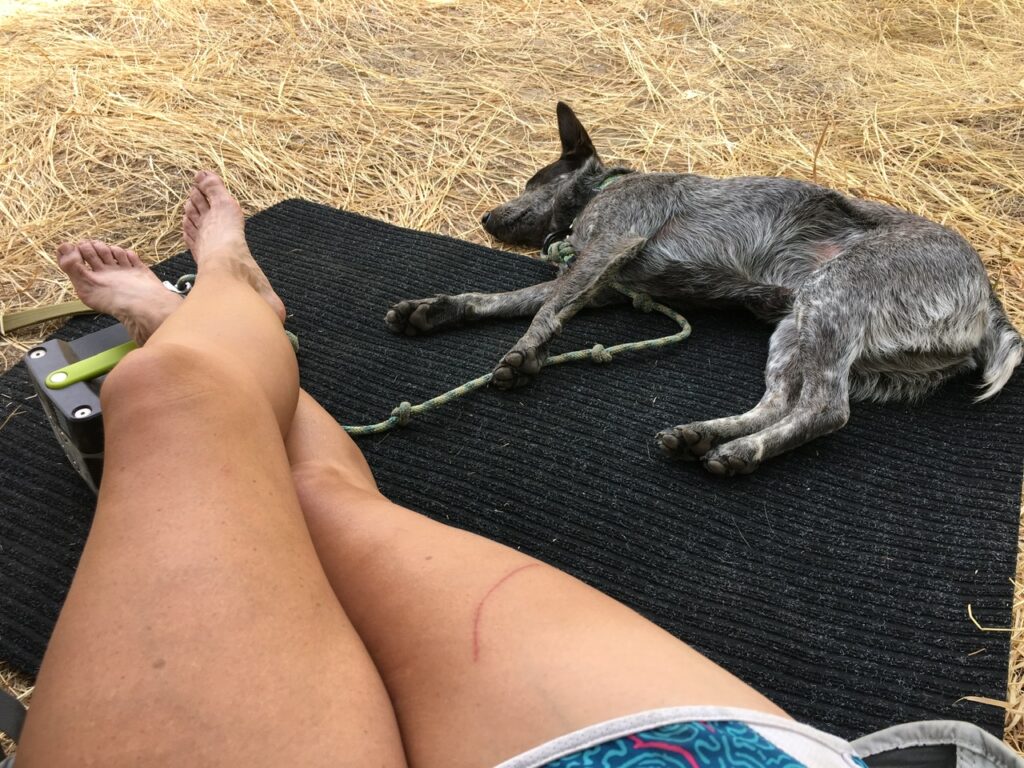
More specs on my Zamp panel and installation.
As mentioned earlier, Zamp is based in Bend and they make a variety of solar charging kits, accessories, and panels. Their portable panels range in wattage from 45 to 230 and come with weather-resistant 5-stage charge controllers. You don’t have to worry about weather with Zamp panels.
I only had to unpack my panel, open it, plug into my Zamp port, then select the proper type of battery on the controller display. Zamp‘s 5-stage charge controllers keep your battery from frying, so it’s important that you select the right type of battery that you’re charging. The controller has 5 battery settings: LiFePO4, LTO (Lithium Titanium Oxide ), Gel, AGM, Conventional lead-acid (WET) and Calcium Batteries.
Voila! It really was that simple.
The charge controller tells you your current battery condition (75%, 50%, 25%) as well as charging status, the voltage and amperage going to your batteries, and the total amp hours you’ve generated in the last 24 hours. I love this last setting! In fact, I kept running outside every 20 minutes when I first hooked up my panels to see how much solar I was generating. It really was that exciting!
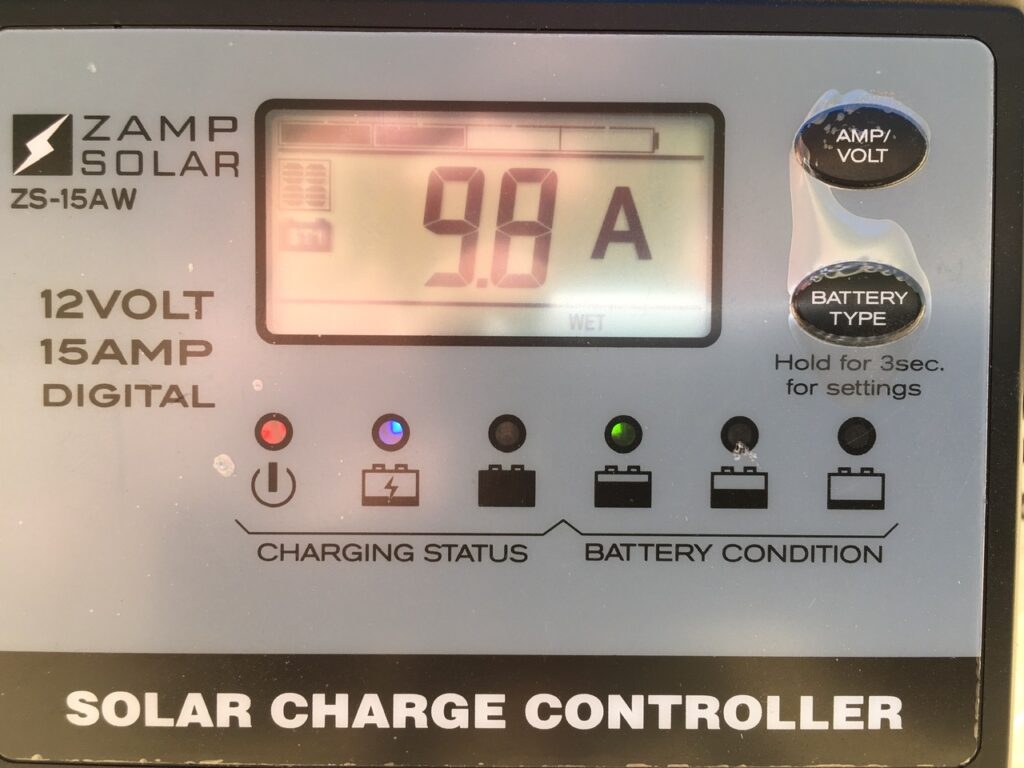
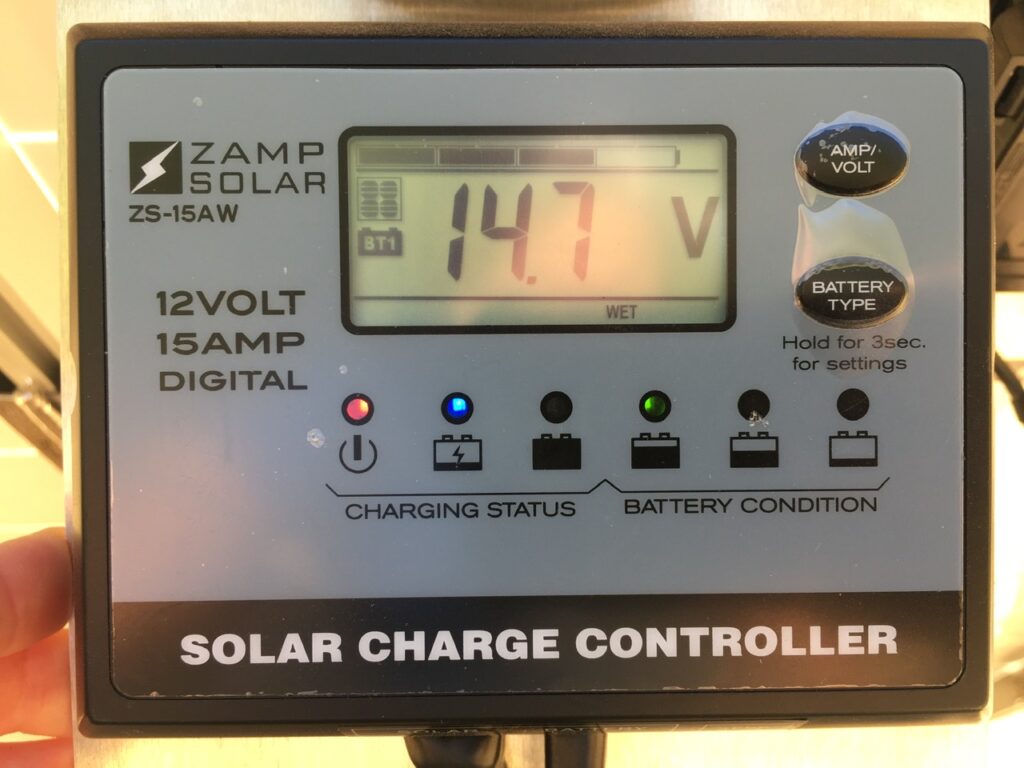
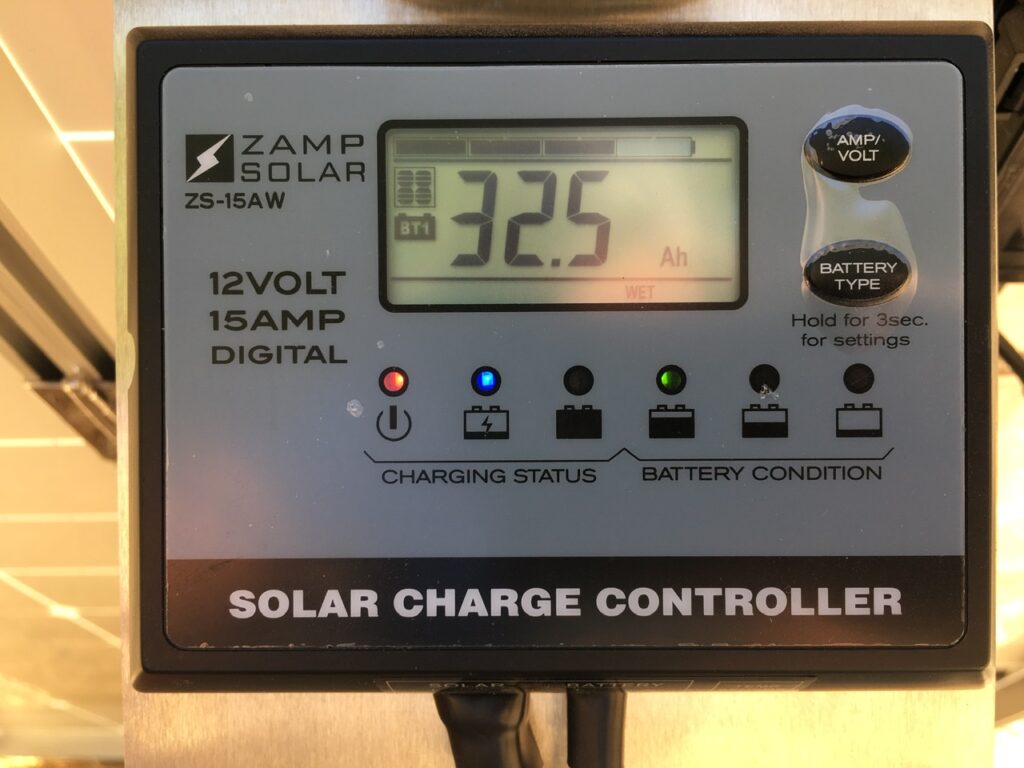
If you don’t have a Zamp-ready port on your RV, the panels come with alligator clips that clip easily to your batteries.
And now finally, how about some solar Q&A? Here are some questions I’ve fielded from friends over the last few weeks.
Solar Q&A.
Q: Do you have A/C?
A: Yes, but not on solar power. A/C is a power hog and doesn’t run on batteries so I don’t have it on solar. Only on shore power. With the thick wildfire smoke we started experiencing over the weekend, I actually headed to the local State Park today for shore power so I can run my A/C and get a break from the smoke.
Q: Does your microwave work?
A: Not on solar power. This is another power hog that doesn’t work on batteries. I use my propane cooktop exclusively while on solar.
Q: How are you charging your laptop without 110V shore power outlets?
A: Ok, this one is more complex. I realized pretty quickly that my Airstream didn’t come with an inverter, which is a device that turns your 12V battery power into 110V. Basically, it lets you plug in “normal” appliances, like laptop chargers, coffee makers, things like that. Most Airstreams have one but Bambis don’t.
I work a tech job during the day, so it’s pretty imperative that I can keep my MacBook, Surface, phone and hotspot charged. The solution? Portable inverters!
You can find lots of wattage inverters online that plug into the cigarette lighter adapter of your vehicle. I already have a 300W for my truck. My Bambi has a 12V cigarette lighter type TV plugin, so I bought an additional 100W inverter from the local Ace Hardware for $35 that can plug into that and charge off my RV batteries.
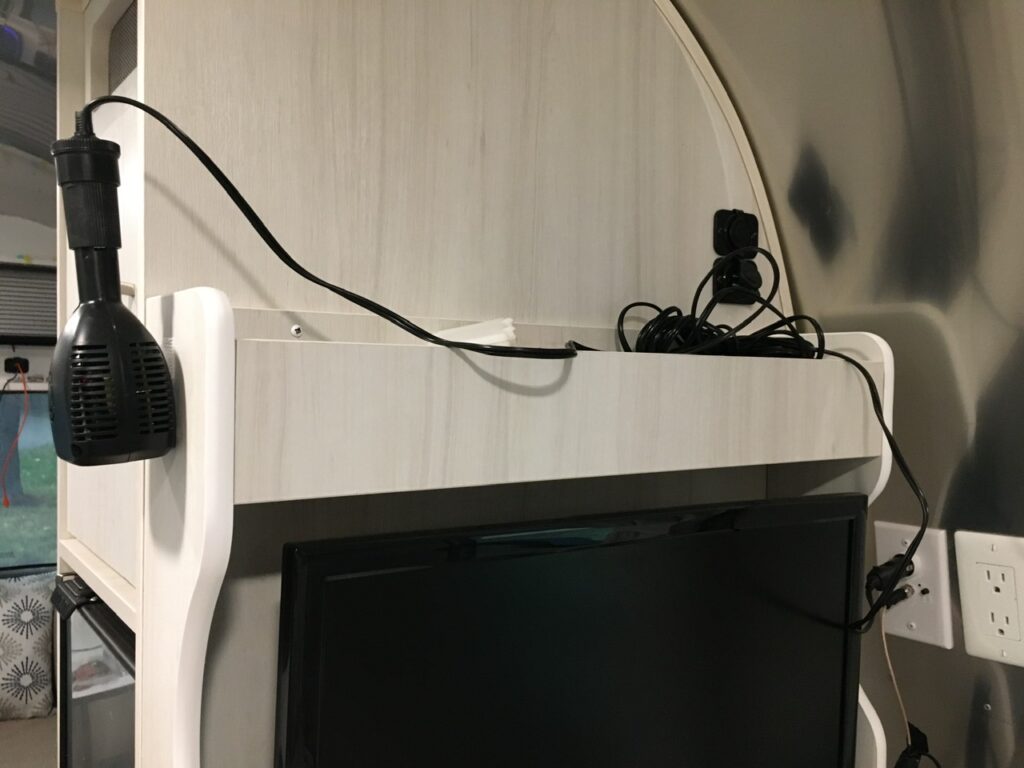
A word of caution though: an inverter will draw a lot more amperage and can drain your batteries fast. I only use it when my batteries are well charged or when my solar panel is cranking maximum power to my batteries.
The primary way I keep my laptops charged? I have two portable NinjaBatts that I usually charge off a separate portable 100W solar panel. I can also charge the NinjaBatts from my the built-in inverter in my Tacoma truck bed.
I power my laptop off my portables rather than my RV batteries. I’ve also successfully been able to charge my NinjaBatts off my little 100W Ace Hardware inverter without negative consequence to the RV batteries, but again, I do it during the day when I have full sun and the solar panels are cranking. I prefer to keep my RV batteries for the essentials like the water pump and refrigerator. My phone and hotspot stay easily charged off the onboard USB plugs in my Bambi with no problem.
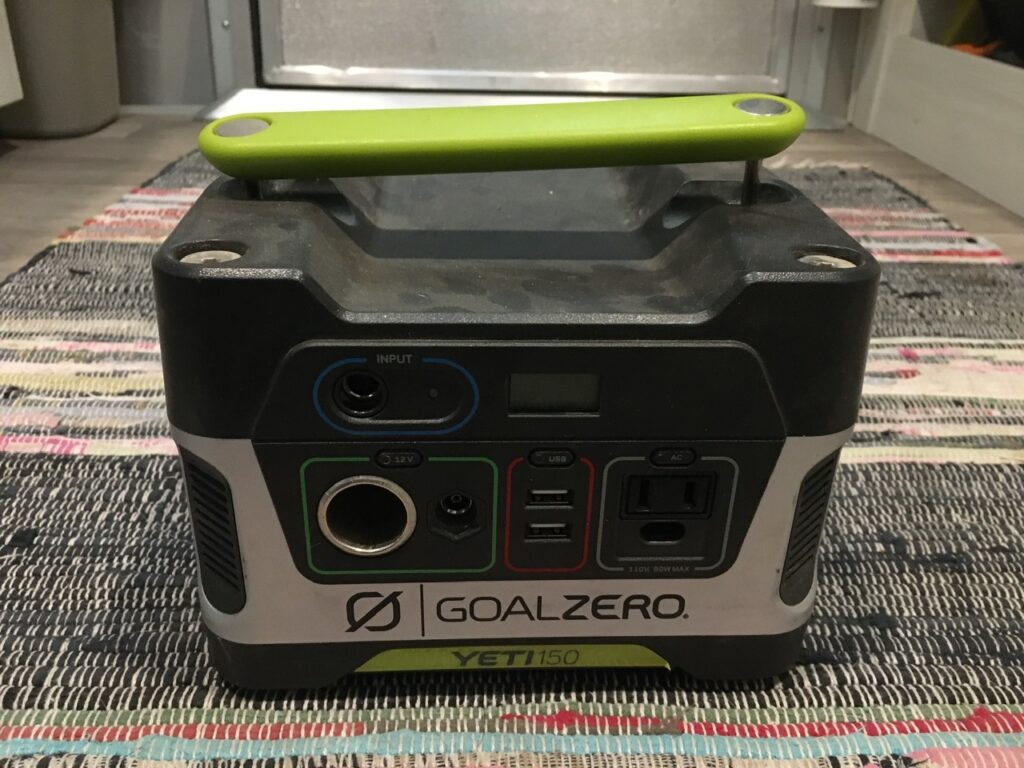
Q: What appliances and powered devices are you frequently using?
A: Other than the electronics I need for a work, I’m not a big power user. I watch little TV and tend to use my solar lights over onboard LED lights. I’d say the most common things I’m powering are:
- refrigerator
- water pump
- ceiling fans
- onboard USB ports for phone and hotspot and other devices
- USB-powered LED dragonfly string lights, pretty much a must-have!
- LED onboard lights, but I primarily use my solar lanterns
- the Airstream also has some parasitic draw with the propane/carbon monoxide detector
As I mentioned earlier, I power my laptop mostly off my portable GoalZero and my truck. I’ve used the furnace briefly on a few chilly mornings, which uses power for the blower. I’ve also used the water heater a handful of times, which is mostly propane, but still a bit of power.
Q: How do you power your cook stove?
A: My two burner cookstove is propane. No battery power required!
Q: What are you doing for coffee?
A: Coffee is non-negotiable for me and I like my fresh ground beans! I have a little Cuisinart two cup coffee maker, but it only works on shore power, so I got myself a little hand grinder and fancy pour over. The grinder is fantastic and doesn’t take very long. I call it zero amp coffee.
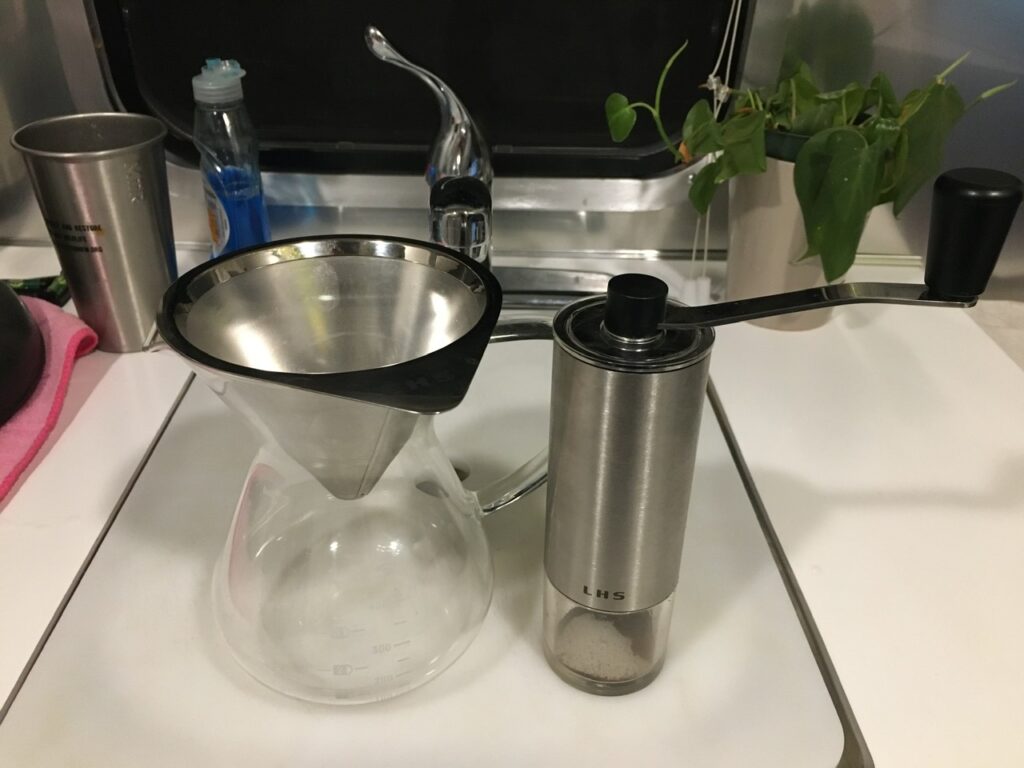
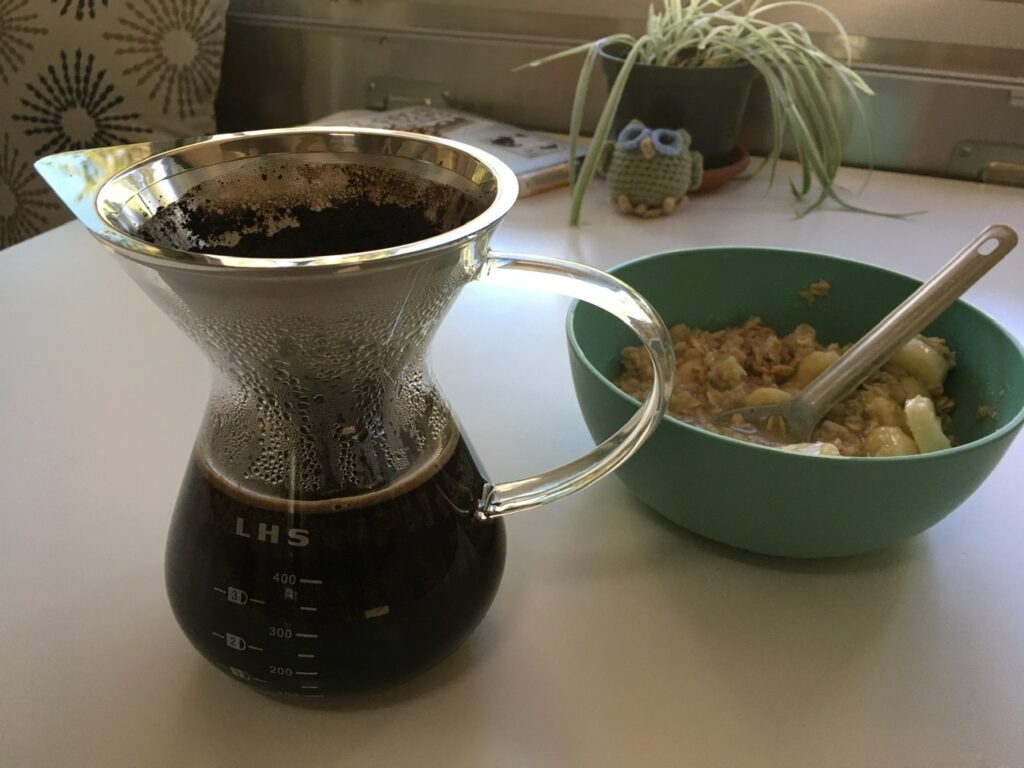
Q: What’s the biggest power drain for solar?
A: Without question the refrigerator. I was able to run the refrigerator for 3 days on battery power without solar, so it’s reasonably efficient, but it does burn the most power. I keep it on the lowest setting and if it’s chilly at night, I’ll turn it off completely until morning to save power. It stays plenty cold.
I think perhaps the 2nd biggest draw is the furnace. It uses propane for heat but the blower fans use battery power and seems to draw a decent amount of power.
And now the last question, which isn’t necessarily related to solar, but is one of the biggest lessons I’ve learned while off-grid living.
Q: What’s your shower situation and what’s your biggest surprise of off-grid living?
A: The key to off-grid living isn’t really power management, it’s water management.
I’m cheating a bit when it comes to showering. I’ve taken some quick Airstream showers, but mostly I’ve been using a nearby shower to cut down on my waste water, which leads me to the point above. I spent so much time researching power and solar that I overlooked the biggest limiting factor when living off-grid. It’s not power, it’s water and waste management!
Yep. Managing your fresh water and waste water is really the key to how long you can stay off the grid.
My Bambi has a 23 gallon fresh water tank, a 28 gallon gray tank (for sink and shower water), and an 18 gallon black tank (for, well…. you know). They’re not huge, but they’re decent sized. And it’s only me. But it was eye-opening how quickly I can fill the gray tank. In my first two days my gray tank was already 30%.
I got a lot more aware and clever with my water usage, mostly when it came to dish washing and eventually I was able to make it 10 days before my tanks were around the 65-75% level. I think I could survive 2 weeks on my tanks before needing to dump them, but it takes some real awareness and periodic access to outside facilities.
As far as fresh water? With all this warm weather and both myself and my dog being pretty athletic, we can easily run through my 23 gallon tank in a matter of 5-6 days, so having access to water is important too.
If you’re thinking of solar power and off-grid time in your RV, take some time to get really savvy with water and waste management. It’ll be the biggest limiter to how long you can stay out.
Final Thoughts on Solar Living
Living on 100% solar power for 17 days has been an incredible experience. It’s made me more aware of my footprint, power usage, and resource management. It’s also made me appreciate the little things, like microwaved mac & cheese and sunny, clear skies.
That being said, I’ve had a string of solar perfect bluebird days, I’m in comfortable temps, and I’ve not had to run my furnace for any length of time. I’m in ideal, optimum solar conditions.
If you’re thinking about going solar:
✅ Start small. You don’t need to spend thousands.
✅ Get a portable panel. Test it out before committing to a big system.
✅ Know your battery capacity. Your power is only as good as your batteries.
✅ Practice water management. It’s your actual limiting factor when boondocking.
This has been one of the simplest, most enjoyable experiences I’ve had in a long time.
Would I recommend it?
Absolutely.
Now if you’ll excuse me, I’m off to enjoy another zero-amp cup of coffee. ☕️
Happy trails!
